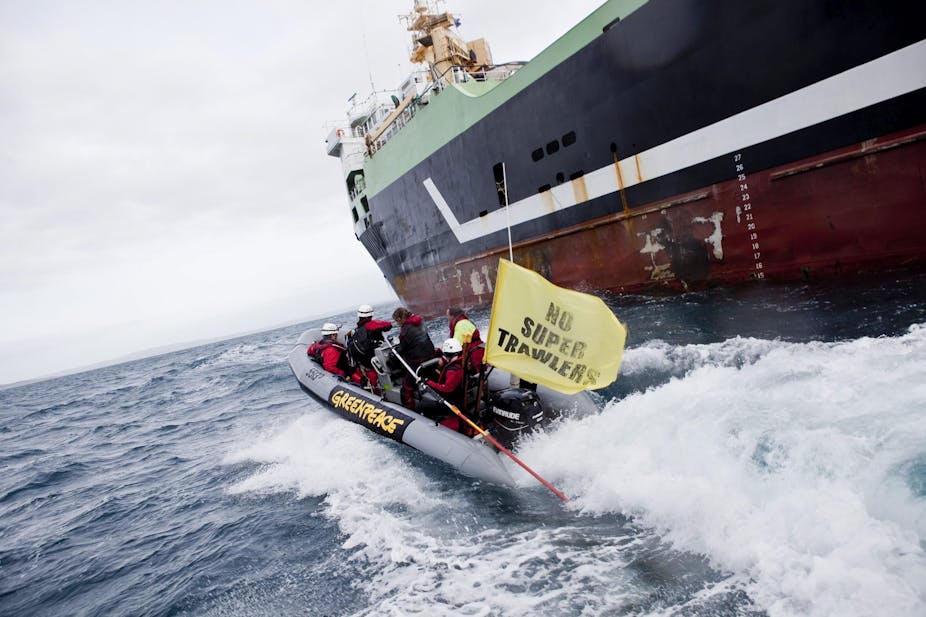The super trawler Margiris is an environmental “experiment” and the conditions placed on it by the government don’t go far enough to protect dolphins, seals and other protected species, fisheries and oceans experts argue.
Speaking on the ABC’s Q&A program on Monday, Federal Environment Minister Tony Burke said under national environmental law he didn’t have the power to block the trawler all together.
“What I do have is the legal power to impose a number of restrictions on it based on the impact it can have, not on the fish that it’s targeting, but on the by-catch - the seals, the dolphins, the fish that are protected and listed and I have responsibility for,” Mr Burke said.
These conditions include an onboard observer and the use of a 24-hour underwater camera to monitor the effectiveness of technology designed to eject dolphins and seals accidentally caught in the trawler’s net.
The trawler will not be allowed to fish in sea lion hunting grounds, and if one dolphin or three seals are caught and killed by the nets, the trawler will be required to stop fishing and move 50 nautical miles to restart fishing.
The trawler will also have to report daily on any incidents involving protected wildlife. There will also be regular reviews of the vessel’s response to such incidents.
But Jessica Meeuwig, research professor in the UWA Oceans Institute at University of Western Australia, said these conditions do not justify the introduction of a super trawler to Australian waters.
“The restrictions will not prevent the death of listed species potentially associated with the large capacity of this super trawler,” Professor Meeuwig said.
“The "tough” conditions mean 10 seals can die within a 24 hour period before the Margiris would be required to temporarily suspend fishing operations and relocate in order to continue fishing. So while the observer and camera programs will provide data on the rate and location of deaths, it is not clear to what degree deaths will be mitigated nor why we would expose our protected wildlife to a super trawler,“ she said.
Colin Hunt, who teaches fisheries economics at the University of Queensland, agreed.
"The effectiveness of the exclusion device in the net is the key to the number of deaths that will occur,” Dr Hunt said.
He added it is unlikely that Australian fur seals will be deterred from entering the net, and if the exclusion device isn’t working well and deaths are occurring there may be little that can be done, while at sea, to modify the net.
“The fact that the trawler will be ordered to move on after causing the deaths of a dolphin or three seals is in fact no guarantee that the next shot won’t also cause dolphin or seal mortality.
"The challenge I throw out to Tony Burke is to arrange for the Australian Fish Management Authority to provide its observer data of dolphin and Australian fur seal incidents and deaths during trawling operations and not sometime after the vessel has left our waters,” Dr Hunt said.
Professor Meeuwig has raised concerns about the sustainability of a super trawler targeting “small pelagics” who live on the surface of the water, and said the conditions detailed on Monday do not address those concerns.
“The Margiris still represents a major experiment with respect to Australia’s southern oceans both in terms of officially protected species … and in terms of our other wildlife, the fishes,” Professor Meewig said.

